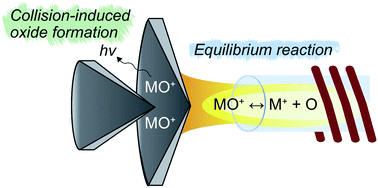Unraveling the mechanism and impact of oxide production in LA-ICP-MS by comprehensive analysis of REE-Th-U phosphates†
Abstract
Oxide interference can be problematic for trace element and isotopic analyses using laser ablation inductively coupled plasma mass spectrometry (LA-ICP-MS). Yet, the oxide production mechanism remains poorly understood. Here, we determined the oxide production rates (MO+/M+ ratios) of 15 rare earth elements (REEs), Th, and U by LA-ICP-MS analyses of synthetic and natural phosphates as well as NIST SRM 610 glass and natural zircon. We found two contrasting oxide production behaviors against the Ar sample gas flow rate, depending on the MO+ dissociation energy (D0(MO+)): the MO+/M+ ratios of elements with D0(MO+) ≥7 eV increased with the gas flow rate from 0.85 to 1.00 L min−1, whereas those with D0(MO+) <7 eV were nearly constant. Moreover, while there is a generally positive relationship between log(MO+/M+) and D0(MO+) among all elements, only the former showed a linear correlation whose slope increased with the gas flow rate. These results indicate that oxide production is a combined result of the following two processes: (i) the equilibrium reaction of MO+ ↔ M+ + O within the plasma and (ii) the bonding of M+ and O through collisions followed by radiative transition in the interface region. Oxide production through the first process was significant relative to the second process only when the elements had D0(MO+) ≥7 eV and the gas flow rate was high enough to decrease the plasma temperature to ∼8000 K. We further demonstrate the significance of middle-REE oxide interference on heavy-REEs during LA-ICP-MS analyses of monazites from pegmatites and garnet-bearing metamorphic rocks.



 Please wait while we load your content...
Please wait while we load your content...